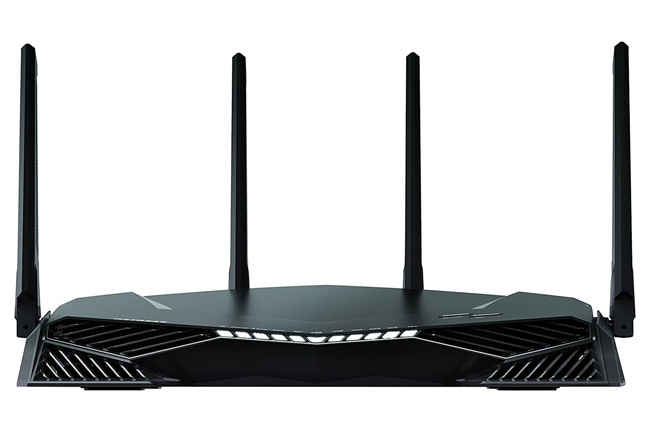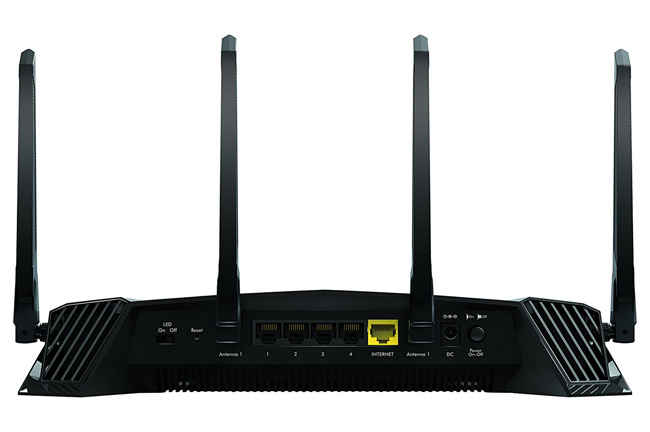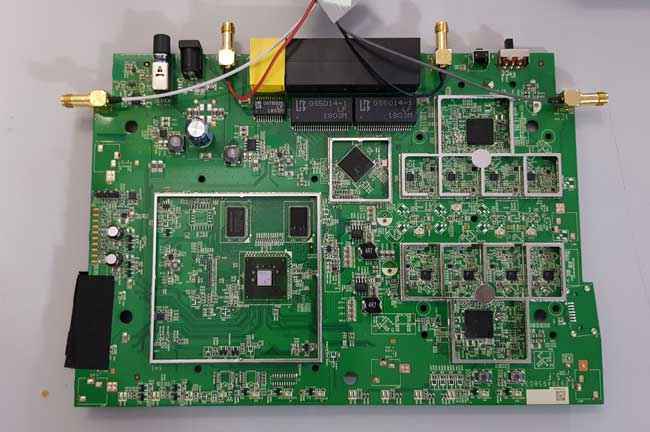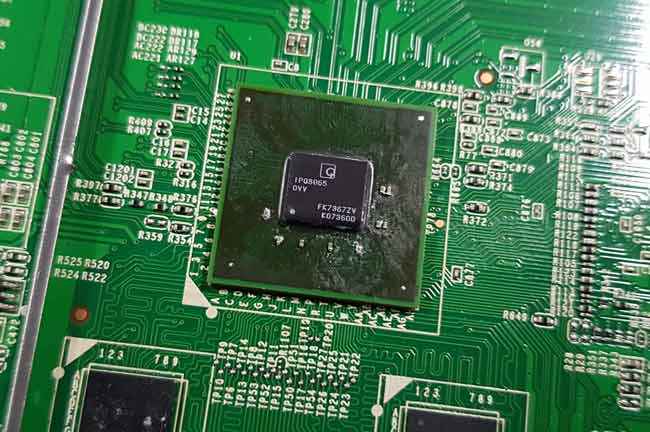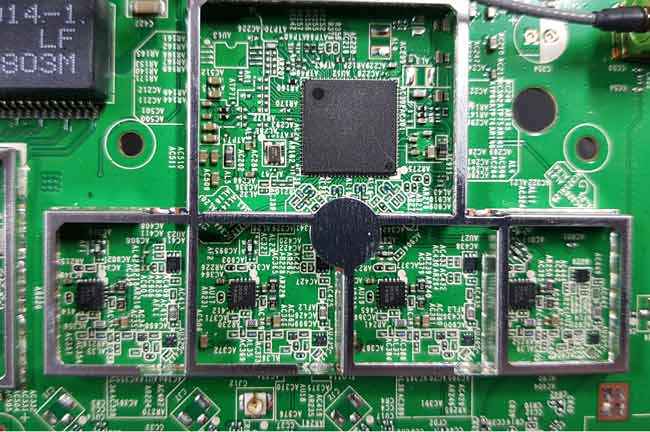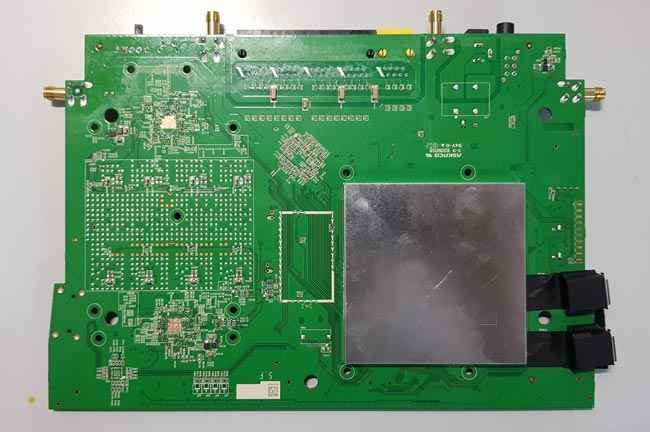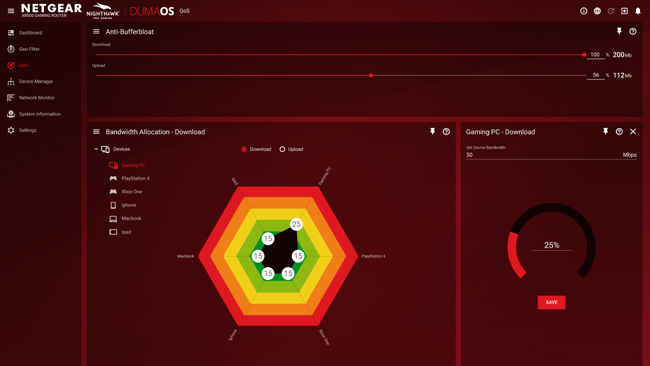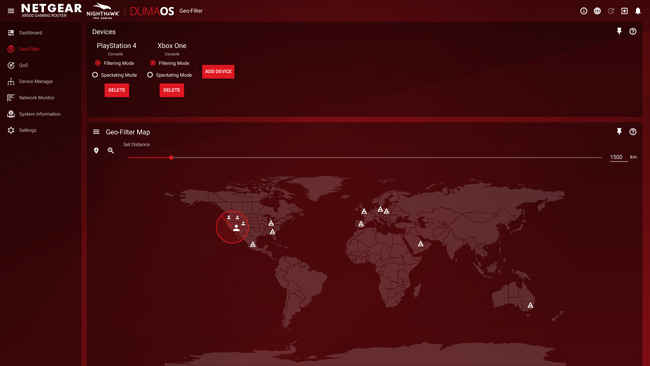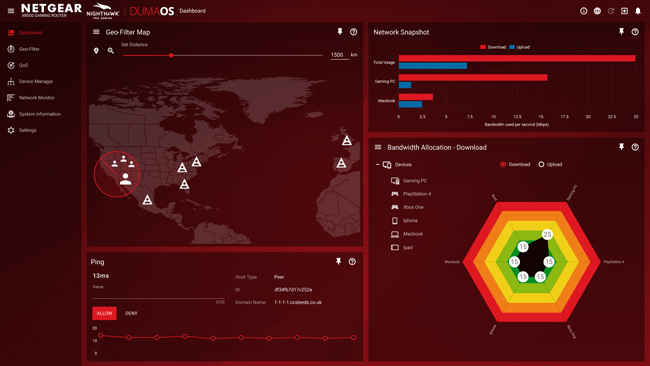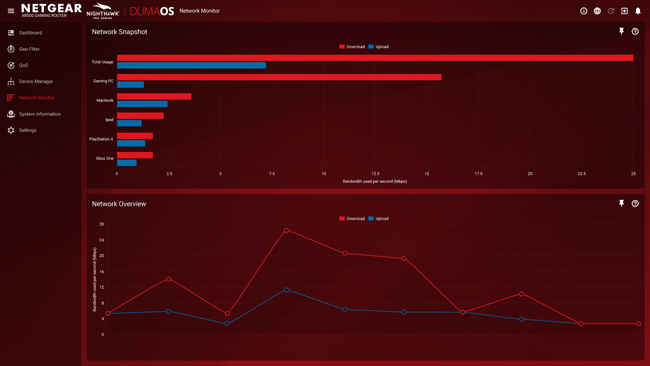NETGEAR Nighthawk Pro XR500 Gaming Router Review : A new entrant in the gaming peripheral scene
Now that routers have become commoditised, the Netgear XR500 takes the right approach towards differentiating itself with a more feature rich UI. Moreover, the XR500 uses Qualcomm Atheros chips instead of the cheaper MediaTek solutions. Right from the different design decisions on the PCB to the final product, the XR500 speaks of good build quality. To top it off, the device also has a really great UI thanks to their partnership with NetDuma in the form of DumaOS. The additional features that bring in geo-fencing, ip-filtering based on ping and a wide variety of QoS settings make the XR500 worthy of being called a gaming router. Netgear isn’t the first to come out with a gaming router but it’s certainly the first to do it the right way. What excites us now is to see how the competition will react to the XR500. Hopefully, it’ll herald a new range of wireless devices with more polished UI and not just flashy buzz-words. For the price of Rs.23,000 the Netgear XR500 isn’t exorbitantly priced. It should be noted that the router’s features are better left to enthusiasts to play with because the average gamer is simply not educated about the advanced networking features that the XR500 ships with. There are a few kinks though, and hopefully Netgear can come out with a hardware revision to resolve them and produce a product that will be talked of for years to come.
The Netgear XR500 is one such router which is being marketed as a “gaming router” given the built-in QoS settings that it sports thanks to their partnership with DumaOS. Built by NetDuma, DumaOS is a router OS that’s supposedly packed with features to optimise your connection. By that they largely mean QoS along with the ability to choose game servers as per your discretion. So if you fancy playing StarCraft II with the most brutal South Korean players, then pick the appropriate server and your connection will be optimised for it. This means that Netgear probably has a VPN built in just for connections heading out to game servers. Here’s how the Netgear XR500 stacks up against the competition.
Build Quality
The Nighthawk series from Netgear have always sported sharp edges and the XR500 continues that style philosophy. The indicator lights have been moved forward compared to the R7000 but the WPS and Wi-Fi on/off switches are still on the top. We’d have preferred that these buttons be placed on the side since top facing buttons always tend to get jammed later on due to dust accumulation.
The XR500 sports four external antennae which are all removable, however, the connectors on the sides are slightly recessed. If you’re planning on using extenders for the cables, then you’ll have to pay attention to your connectors. The antennae connectors are quite rigid which is a welcome feature because nobody wants droopy antennae.
The rear of the router houses 4 Gigabit LAN and 1 Gigabit WAN ports, along with the power socket. There’s absolutely nothing exceptional to be seen here. You can see that the router does have ventilation slits on the front and the sides of the rear face.
At the heart of the XR500 lies the IPQ8065 from Qualcomm which has been built for home networking products. It combines a dual core Qualcomm Krait CPU clocked at 1.7 GHz along with a dual-core 800 MHz NSS. Practically every interface under the sun is supported and these Qualcomm chips have always been a favourite among the custom ROM circuit as well.
For the radios, the XR500 uses two QCA9984 SoCs which are Wave-2 802.11ac radios that supports a dual band 4T4R setup with peak data rates of up to 1.7 Gbps and also has support for MIMO. What’s even better is that at close range, you can switch to a higher frequency channel to increase throughput considerably. The key phrase here is “close range” since adding a few partitions is guaranteed to drop penetration.
For the 2.4 GHz radio, we see the Skyworks 2623L being used for each of the four streams and on the 5 GHz radio, Netgear has opted for the rfmd 5542 power amplifiers. In either case, we see that the amps are optimised for space constraints and happen to offer some of the best performance characteristics.
Coming back to the PCB as a whole. Netgear seems to have not cut any corners for this particular unit. All sensitive SoCs are well shielded and the components are spaced well-apart to help with reducing hotspots. We see that Netgear has used a single 470uF electrolytic filter cap right at the beginning. This could have been easily replaced with a solid state capacitor for better life.
Features
Let’s get straight to the features that make the XR500 stand apart from the competition. There’s the Geo-Filter feature which lets you reduce routing distance by geofencing your router. So when you router looks for a server, it can only find the ones which are within the geo-fence. This works under the assumption that routing would be better to closer servers. However, we’ve noticed that the Indian Internet infrastructure is quite obtuse and oddly configured. We’ve had better pings in LoL and World of Tanks to servers in Europe while servers in Singapore have had really high ping. Fortunately, the next feature takes care of that, in a way.
While a hard and fast limit isn’t set for ping, you can prevent low ping players from discovering your servers. Either you set generic rules or have IP specific blacklists to prevent known culprits with heavy lag from joining your server. Moreover, developers who’ve publicly released their server IPs have allowed for listings within the UI. So you can find the nearest PUBG, CS:GO or LoL server right in the UI.
Other features which stand out are the anti-bufferbloat and built-in deep-packet inspection features. The first one is sort of an anti-congestion QoS feature that ensures specific devices are always set to high priority for speeding up queue transfer. The latter is more of an enterprise feature wherein packet streams are logged for in-depth analysis.
The Netgear XR500 certainly takes the firmware game up a notch and in the right direction. However, most gamers are never going to use these things let alone fiddle with advanced network settings. For the enthusiasts, this is something they’ve been pining for a really long time.
On the hardware front, the Netgear XR500 sports two USB 3.0 ports which are now common in this particular price bracket.
Performance
We start with the file transfer speeds for the two USB 3.0 ports. In our read tests, we could manage about 108 MBps while for write operations we could hit roughly half that speed at 53 MB/s. In our wired throughput test for the LAN-LAN configuration, the XR500 is well capable of pushing around 90 MB/s for read operations and roughly 66 MB/s for the write cycle.
Moving on to the individual wireless bands, we ran a 3×3 throughput test with the router to see how much it could manage and boy did it pull through. On the 5 GHz band, we managed about 440 Mbps on the uplink and around 370 Mbps on the downlink. When the same test was run on the 2.4 GHz band, We then moved onto the individual bands. On the 2.4 GHz band, we managed to get an average speed of 80 Mbps on the downlink and around 85 Mbps on the uplink. In our video streaming tests, the router was well capable of playing 3x high bit-rate video streams averaging about 30 Mbits each.
In our gaming tests, we compared the router against some of the popular game VPN services such as WTFast and found them to be more or less the same. Essentially, you’re getting performance equivalent of a paid software with the Netgear XR500 and thus, it stands up to the moniker of a “gaming” router.
Verdict
Now that routers have become commoditised, the Netgear XR500 takes the right approach towards differentiating itself with a more feature rich UI. Moreover, the XR500 uses Qualcomm Atheros chips instead of the cheaper MediaTek solutions. Right from the different design decisions on the PCB to the final product, the XR500 speaks of good build quality. To top it off, the device also has a really great UI thanks to their partnership with NetDuma in the form of DumaOS. The additional features that bring in geo-fencing, IP-filtering based on ping and a wide variety of QoS settings make the XR500 worthy of being called a gaming router. Netgear isn’t the first to come out with a gaming router but it’s certainly the first to do it the right way. What excites us now is to see how the competition will react to the XR500. Hopefully, it’ll herald a new range of wireless devices with more polished UI and not just flashy buzz-words. For the price of Rs.23,000, the Netgear XR500 isn’t exorbitantly priced. It should be noted that the router’s features are better left to enthusiasts to play with because the average gamer is simply not educated about the advanced networking features that the XR500 ships with. There are a few kinks though, and hopefully, Netgear can come out with a hardware revision to resolve them and produce a product that will be talked of for years to come.
Mithun Mohandas
Mithun Mohandas is an Indian technology journalist with 14 years of experience covering consumer technology. He is currently employed at Digit in the capacity of a Managing Editor. Mithun has a background in Computer Engineering and was an active member of the IEEE during his college days. He has a penchant for digging deep into unravelling what makes a device tick. If there's a transistor in it, Mithun's probably going to rip it apart till he finds it. At Digit, he covers processors, graphics cards, storage media, displays and networking devices aside from anything developer related. As an avid PC gamer, he prefers RTS and FPS titles, and can be quite competitive in a race to the finish line. He only gets consoles for the exclusives. He can be seen playing Valorant, World of Tanks, HITMAN and the occasional Age of Empires or being the voice behind hundreds of Digit videos. View Full Profile

